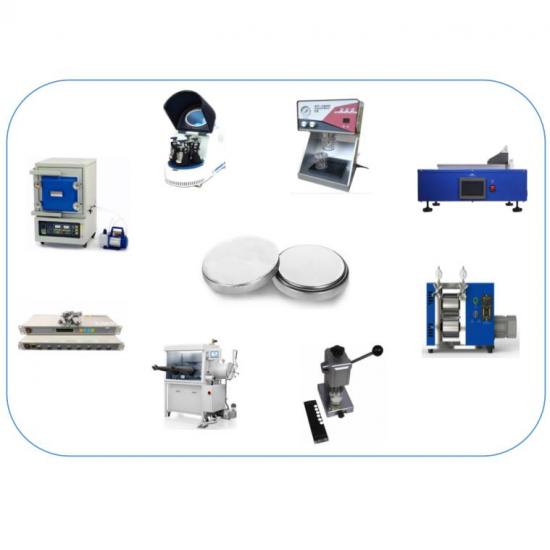A "Coin Cell Lab Line" refers to a specialized laboratory setup or equipment used for the research, development, and testing of coin cell batteries. Coin cell batteries, also known as button cells, are small, disc-shaped batteries commonly used in various electronic devices like watches, calculators, and small medical devices. A Coin Cell Lab Line typically includes various tools, equipment, and instrumentation needed for the fabrication, testing, and analysis of coin cell batteries. Here are the key components and functions of a typical Coin Cell Lab Line:
Coin Cell Assembly line: The lab line includes equipment for the precise assembly of coin cells. This involves placing the positive and negative electrode materials, separator, and electrolyte into the coin cell casing. Equipment may include a coin cell crimper to seal the battery.
Electrode coating machine: For research and development purposes, the lab line may include electrode coating machines. These machines coat electrode materials (such as lithium cobalt oxide for the cathode) onto metal foils with precise thickness and uniformity.
Die Cutting: Coin cell components, including the electrodes and separator, are often cut into the desired circular shape using die-cutting machines.
Electrolyte Filling: Equipment for accurately injecting the electrolyte solution into the coin cell casing, ensuring proper ion conduction.
Sealing Machines: These machines are used to seal the coin cell casing to maintain airtightness and prevent leaks. Various sealing methods like crimping or welding may be employed.
Formation and Testing: Coin cells go through a formation process involving initial charging and discharging cycles to stabilize their performance. Testing equipment is used to evaluate the battery's capacity, voltage characteristics, cycle life, and safety features.
Electrochemical Analysis: Lab lines often include instrumentation for in-depth electrochemical analysis. This includes techniques like cyclic voltammetry and impedance spectroscopy to study battery behavior.
Safety Testing: Coin cells may undergo safety testing to assess their resilience to overcharging, over-discharging, and external factors like heat or mechanical stress.
Environmental Chambers: Environmental chambers or ovens are used for aging tests, exposing coin cells to elevated temperatures and humidity to simulate real-world conditions.
Data Acquisition and Analysis: Systems for collecting and analyzing data from various tests and experiments, helping researchers understand the performance characteristics of the coin cells.
Materials Characterization: Analytical instruments, such as scanning electron microscopes (SEM) and X-ray diffraction (XRD) machines, may be part of the lab line to analyze the composition and structure of electrode materials and components.
Glove Boxes: Glove boxes with controlled atmospheres may be included to handle sensitive materials like lithium metal in a moisture-free environment.
Quality Control: The lab line may include quality control stations where coin cells are inspected for defects and adherence to performance standards.
Coin Cell Lab Lines are essential for battery research and development, allowing scientists and engineers to create, test, and analyze coin cells under controlled conditions. These setups are critical for improving battery technology, enhancing energy storage solutions, and ensuring the safety and reliability of coin cell batteries used in various applications.




 Online service
Online service
